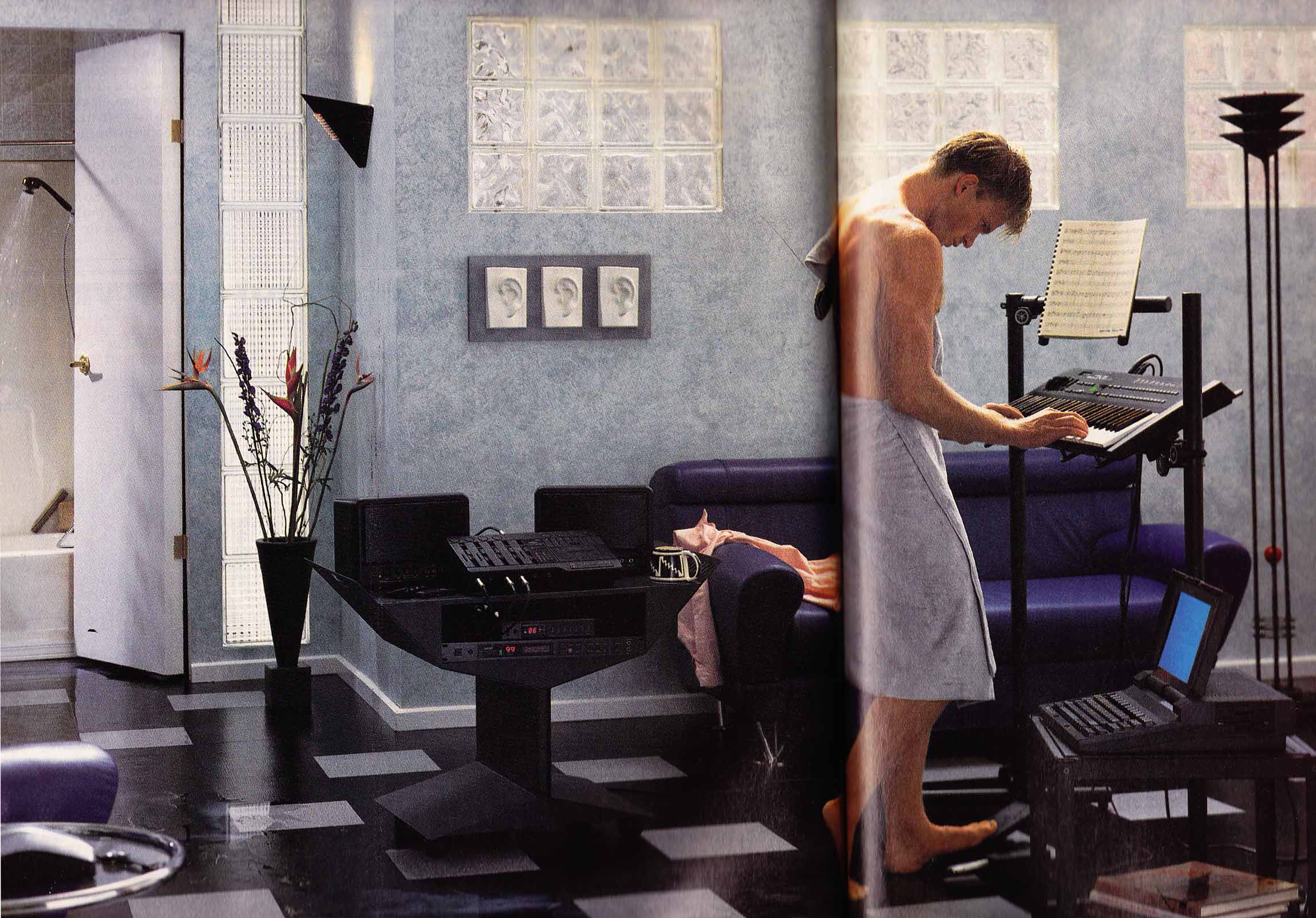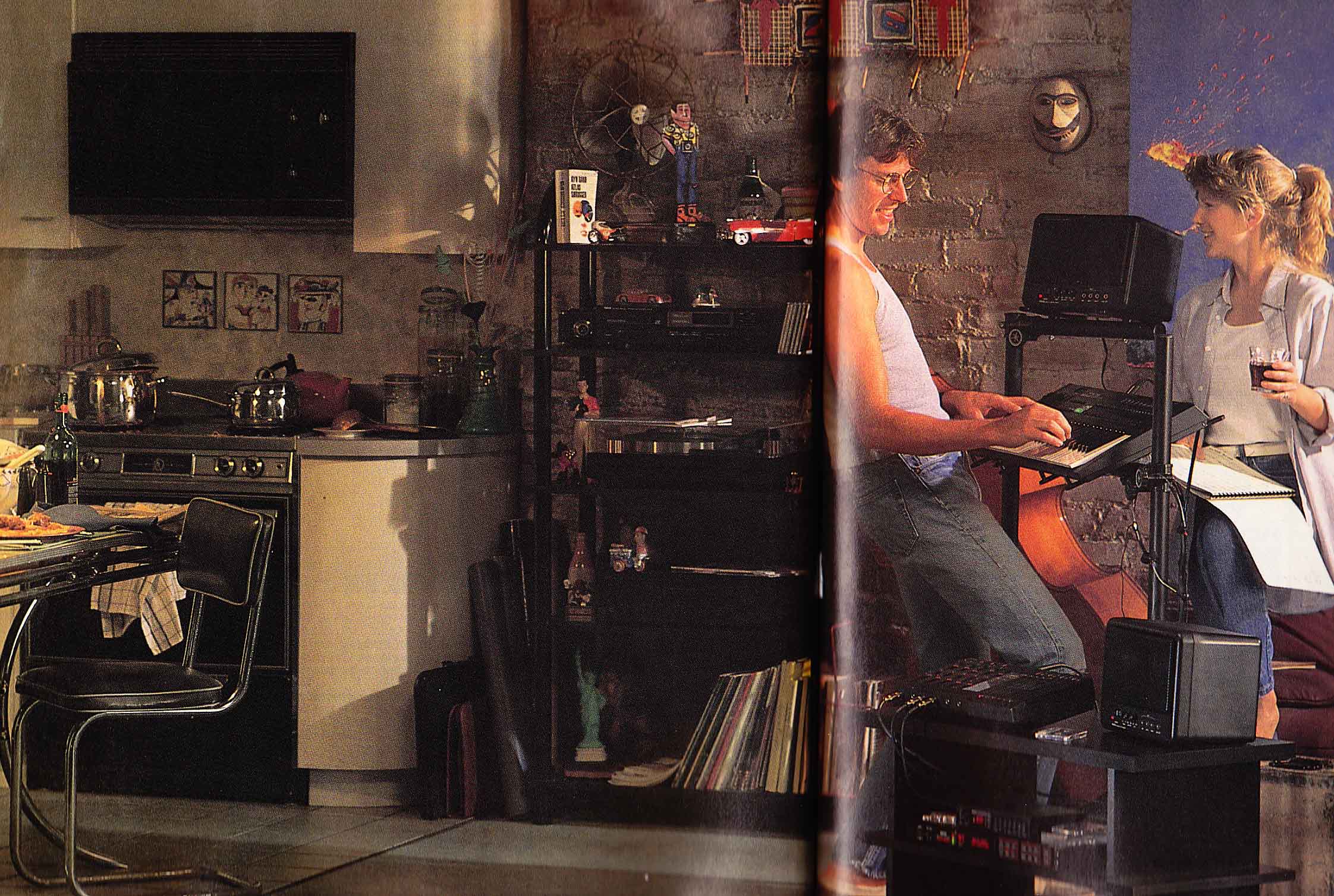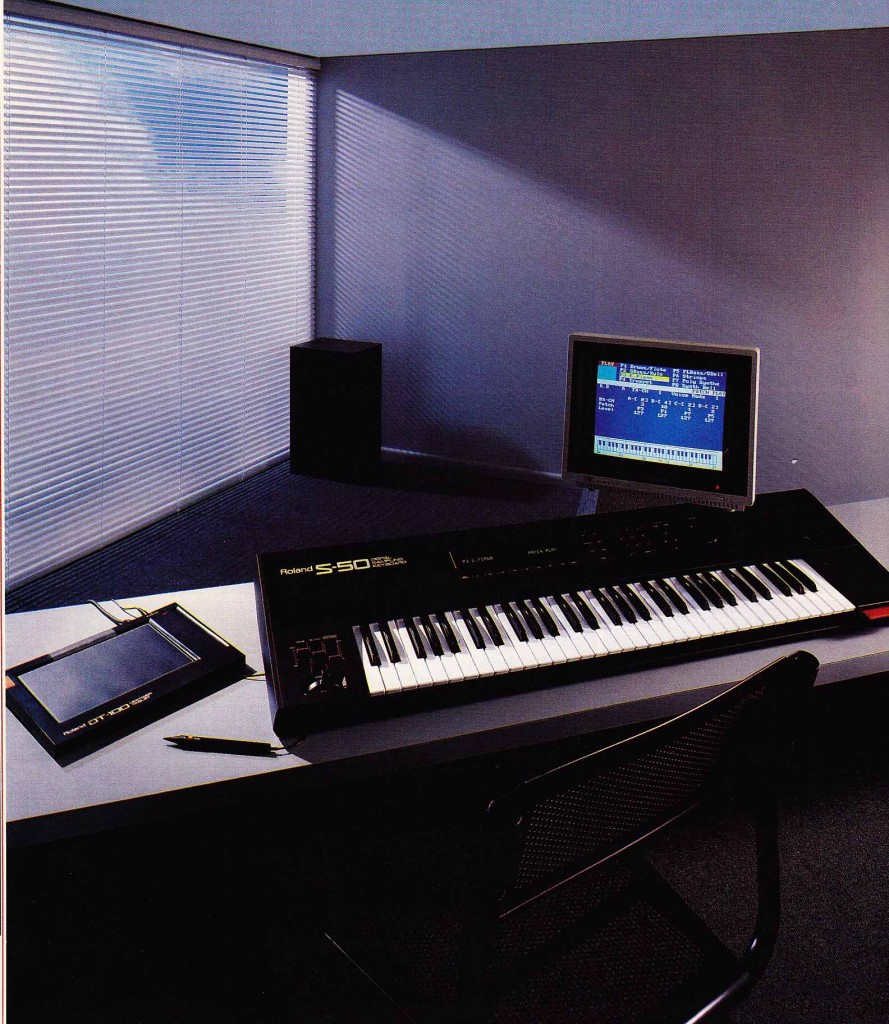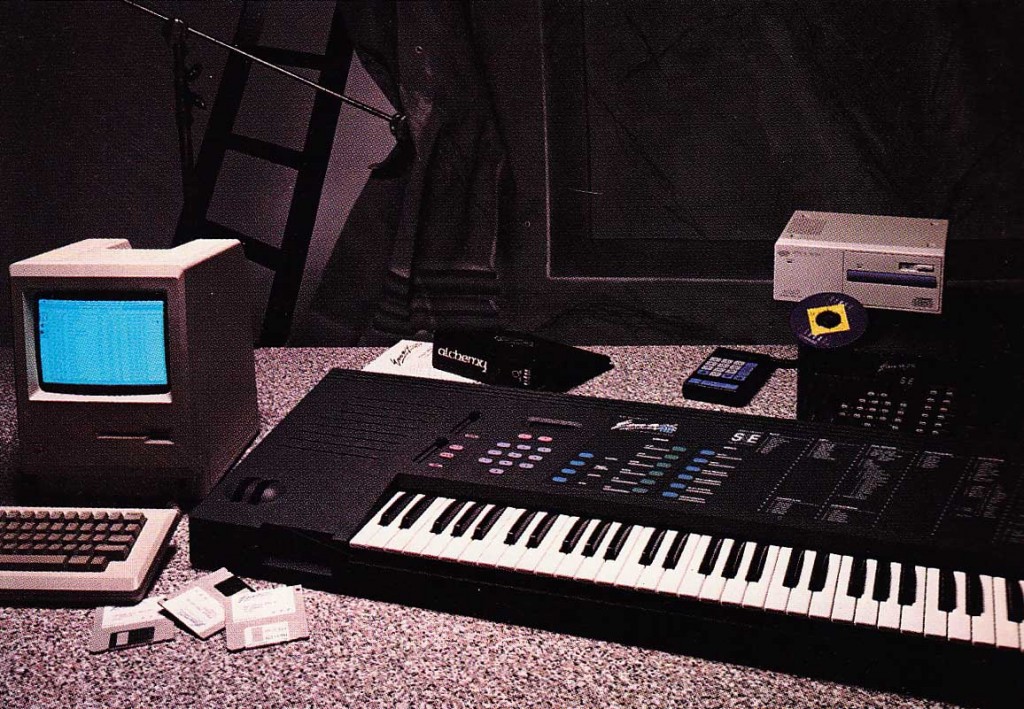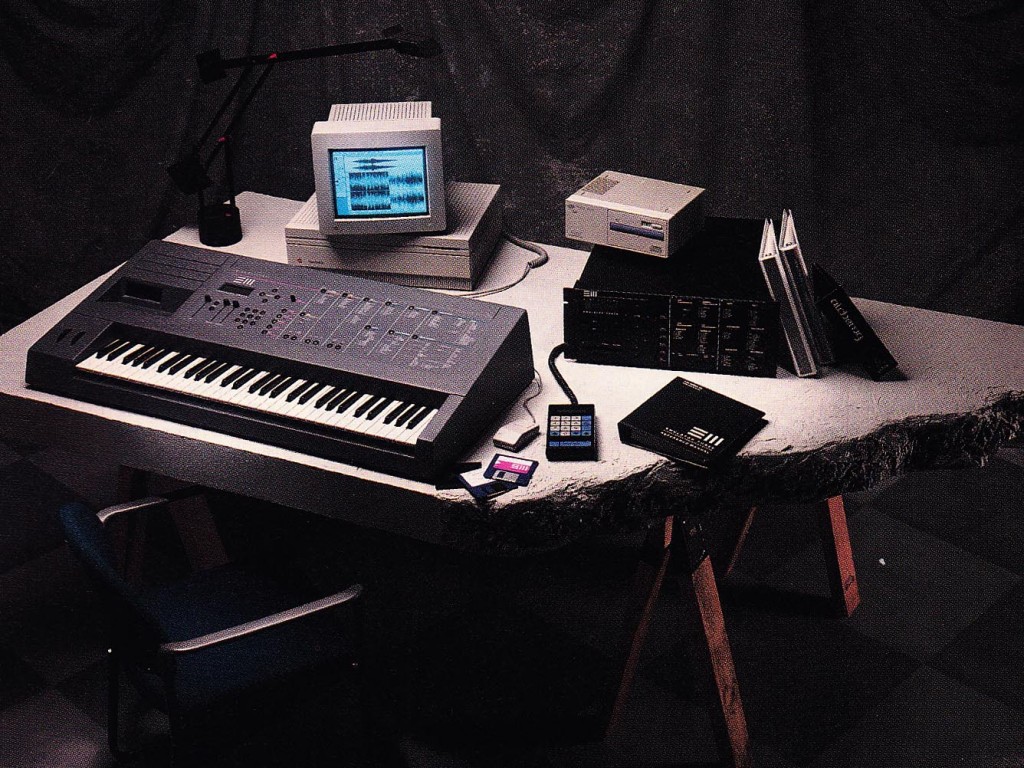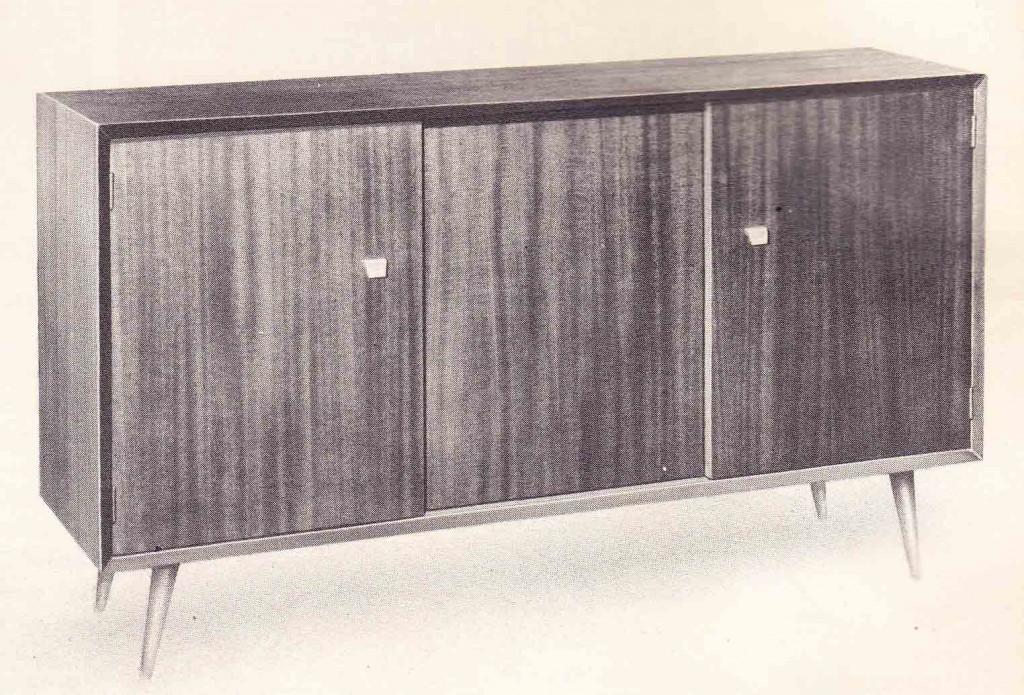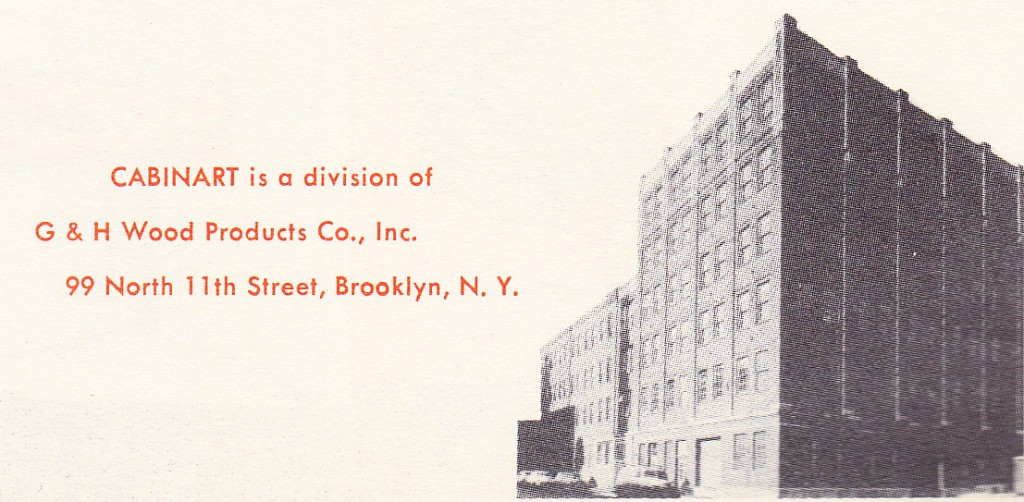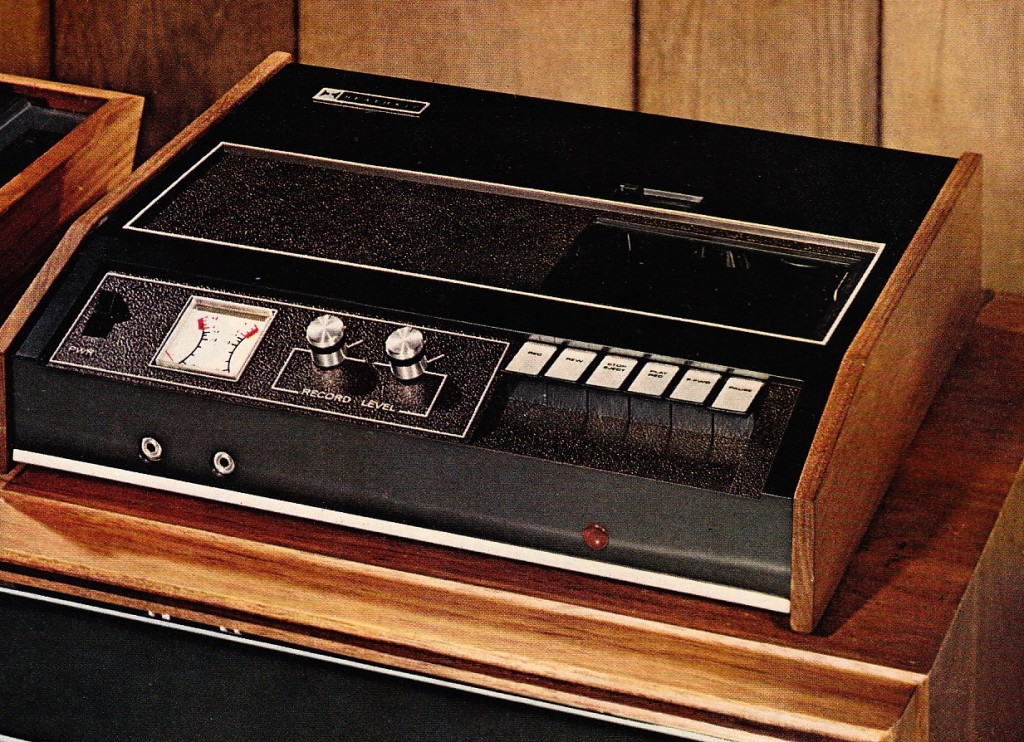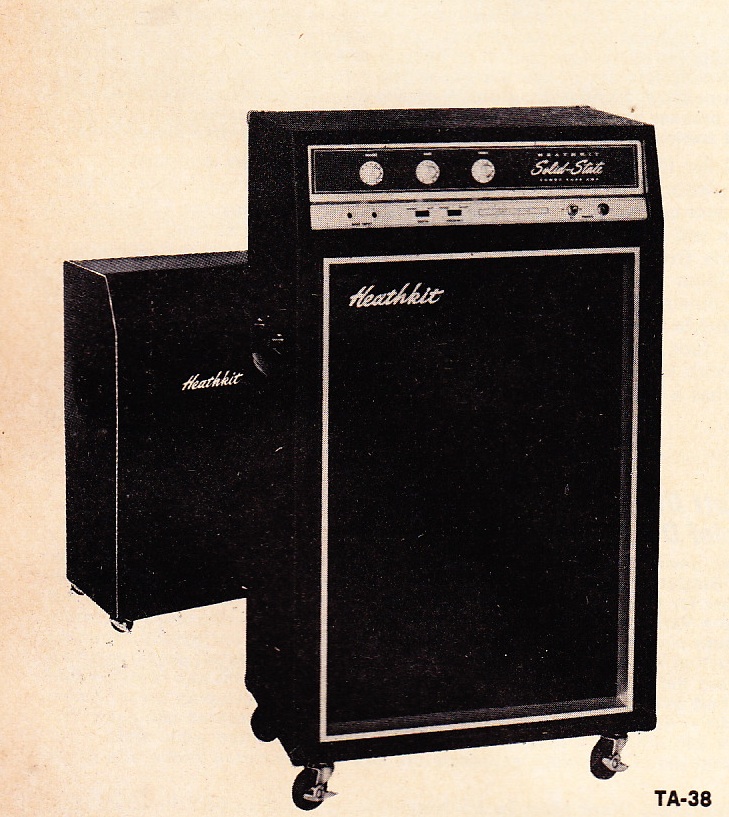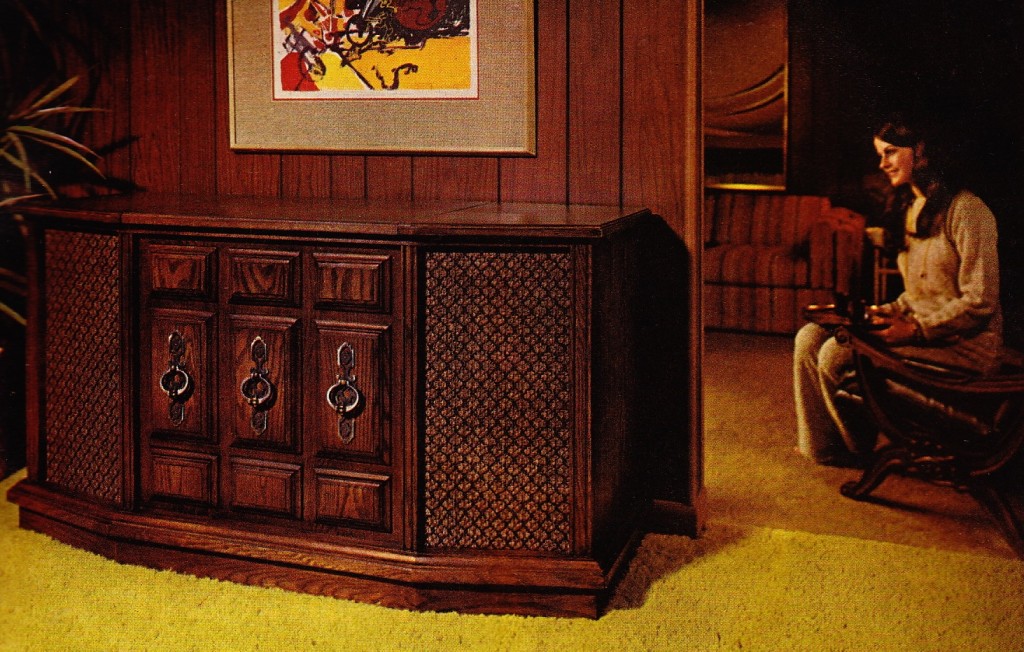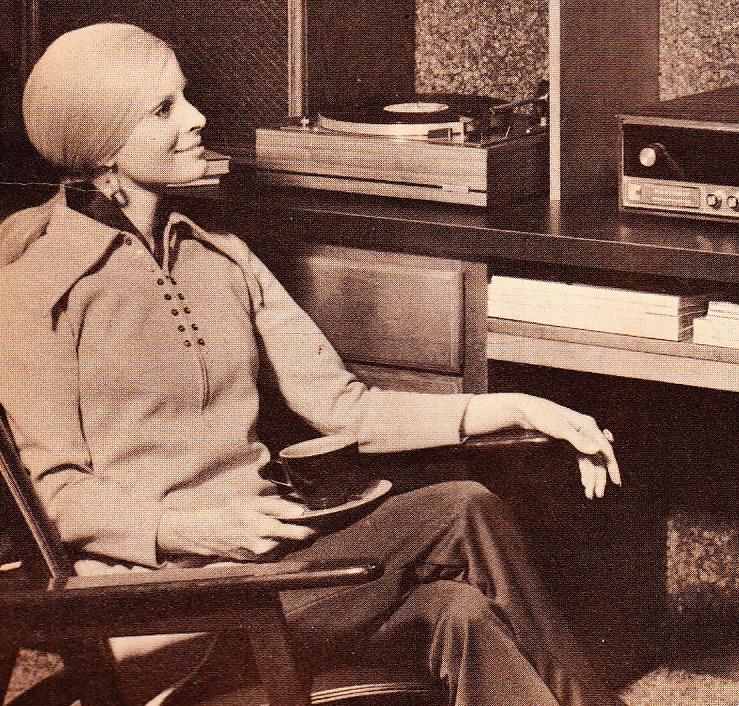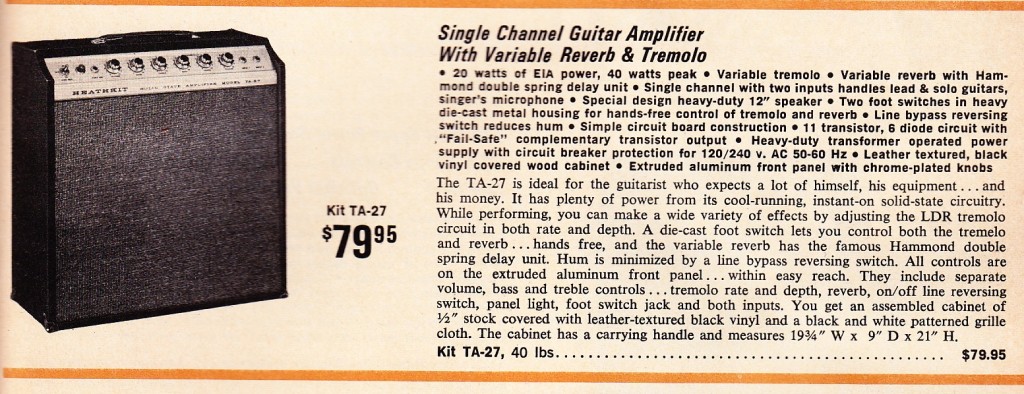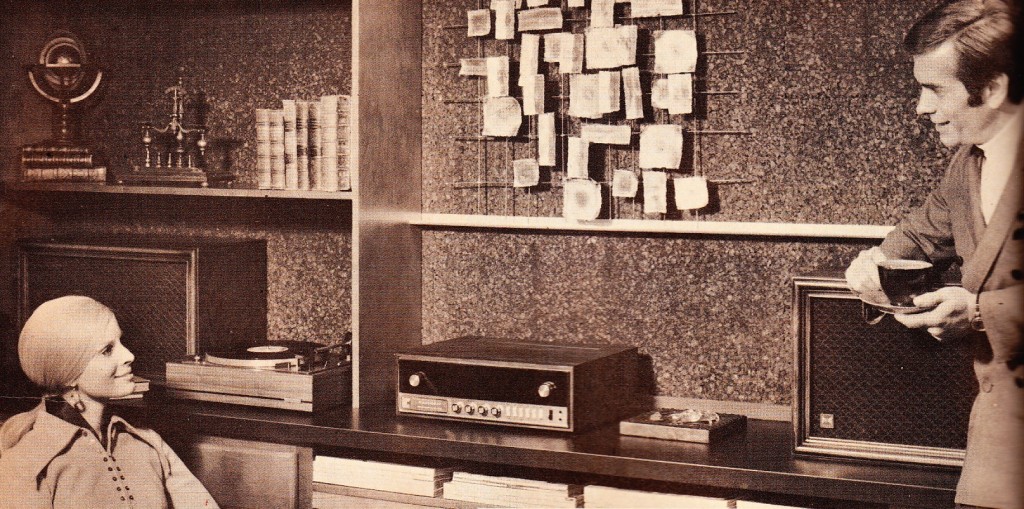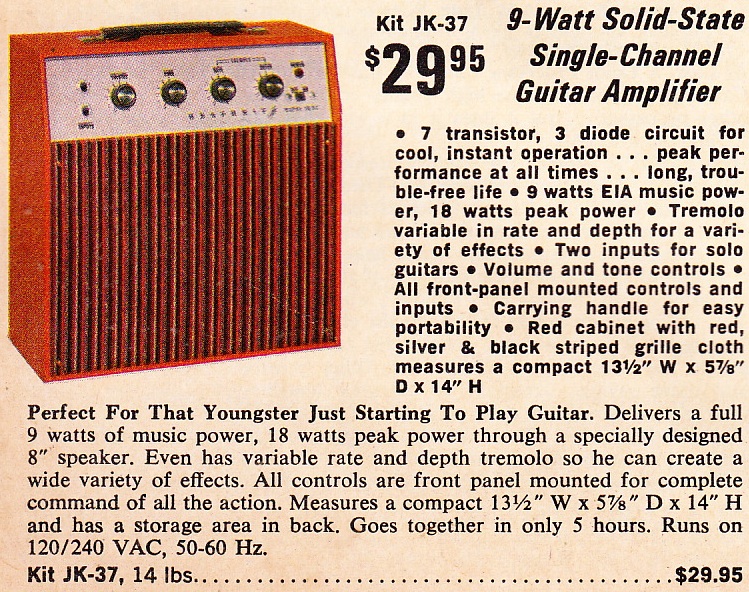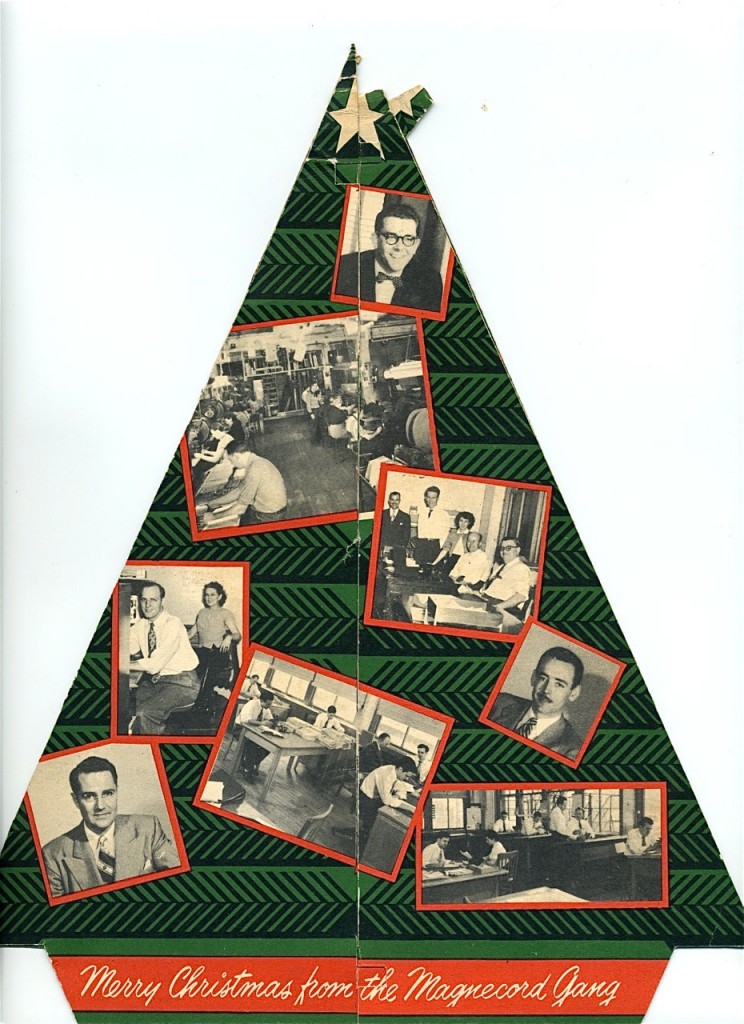Yamaha home-studio adverts circa 1989. Click on the images to expand.
Author: chris
1967
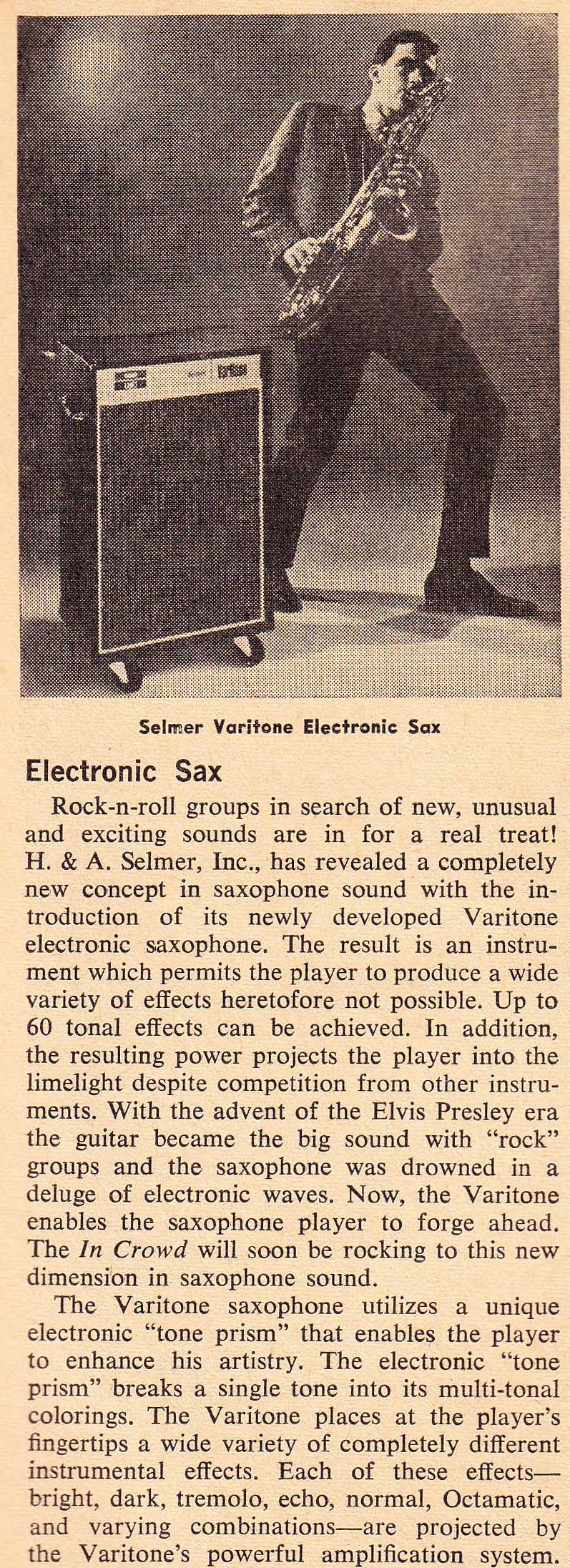 The Selmer Varitone Saxophone amplification system circa 1967. Click here for previous coverage on PS dot com. I once bought a few of the lil cigarette-pack-sized belt-mount preamp units; they make the most fantastic fuzz sounds when used with gtr or bass. Long gone to the eBay wilds…
The Selmer Varitone Saxophone amplification system circa 1967. Click here for previous coverage on PS dot com. I once bought a few of the lil cigarette-pack-sized belt-mount preamp units; they make the most fantastic fuzz sounds when used with gtr or bass. Long gone to the eBay wilds…
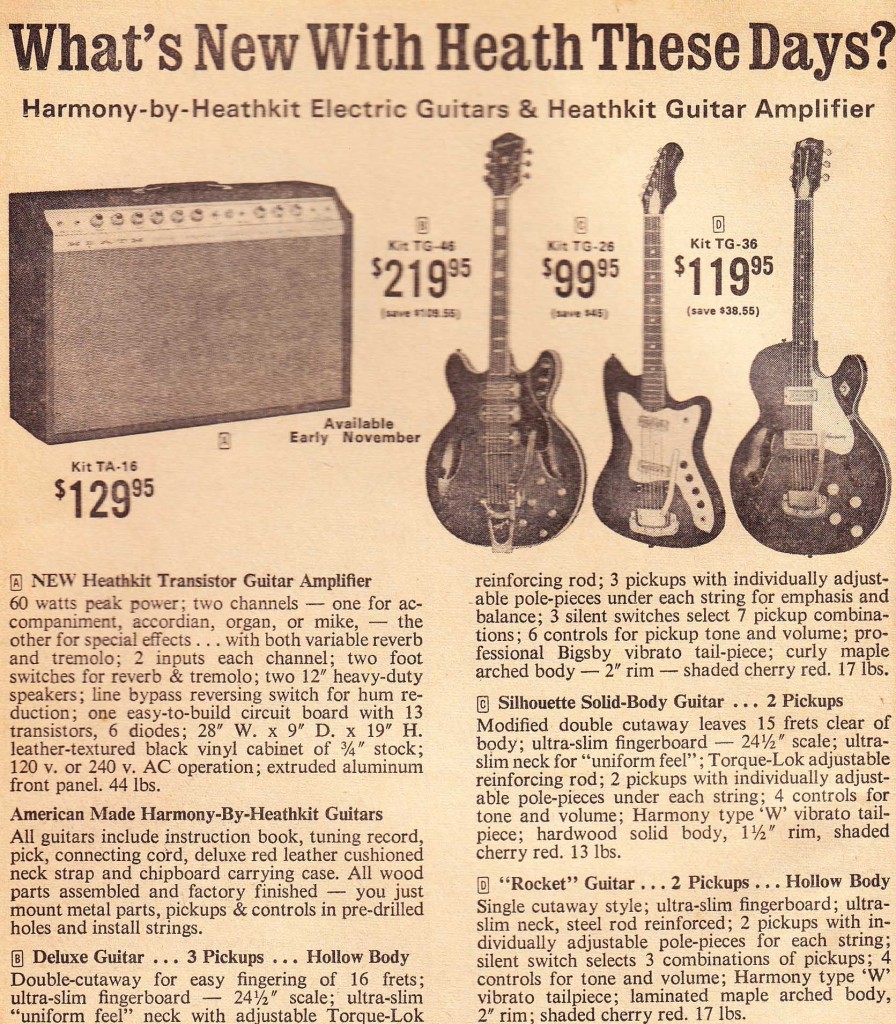 Heathkit rock-band hardware circa 1967, including Heath-distributed Rocket, Silhouette, and ‘Deluxe’ Harmony guitars. Also on offer: Heathkit TA-16 solid-state guitar amp. Click here and here for more Heathkit coverage on PS dot com.
Heathkit rock-band hardware circa 1967, including Heath-distributed Rocket, Silhouette, and ‘Deluxe’ Harmony guitars. Also on offer: Heathkit TA-16 solid-state guitar amp. Click here and here for more Heathkit coverage on PS dot com.
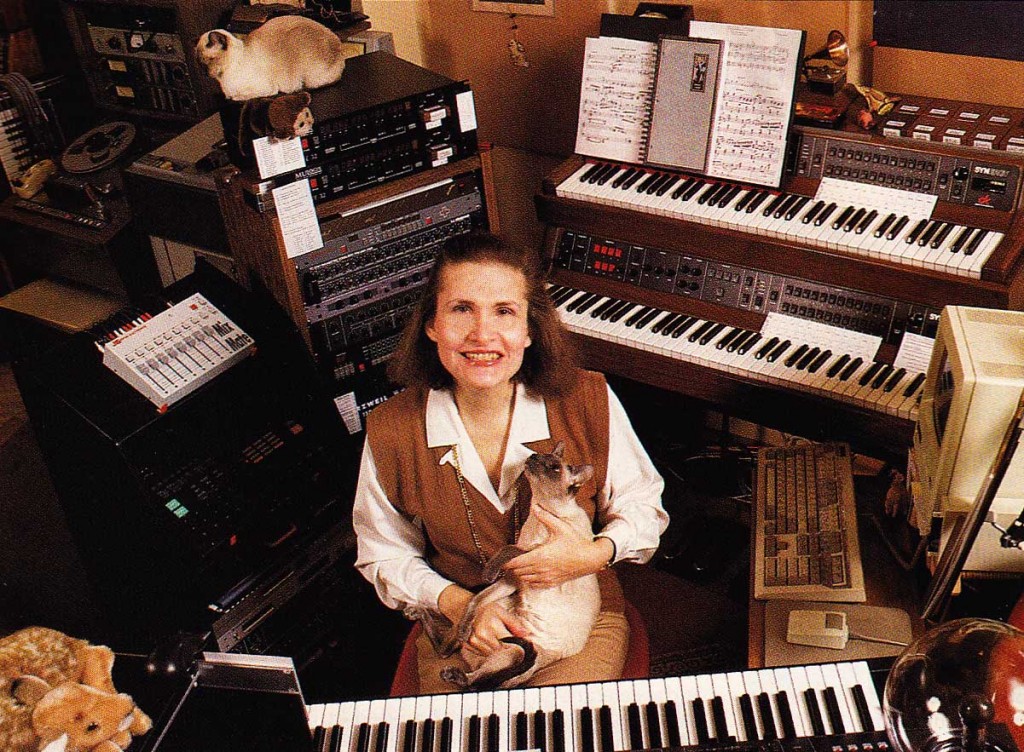 Although I don’t necessarily agree with super-aggressive enforcement of certain copyright laws, OR the fact that she tried to sue one of my favorite recording-artists after he released an affectionate tribute-song about her, I don’t want anyone to think that I am hating on Wendy Carlos. Given the remarkable and really uncanny life of this great composer, who can really judge? Pictured above: Carlos with cats and synthesizers.
Although I don’t necessarily agree with super-aggressive enforcement of certain copyright laws, OR the fact that she tried to sue one of my favorite recording-artists after he released an affectionate tribute-song about her, I don’t want anyone to think that I am hating on Wendy Carlos. Given the remarkable and really uncanny life of this great composer, who can really judge? Pictured above: Carlos with cats and synthesizers.
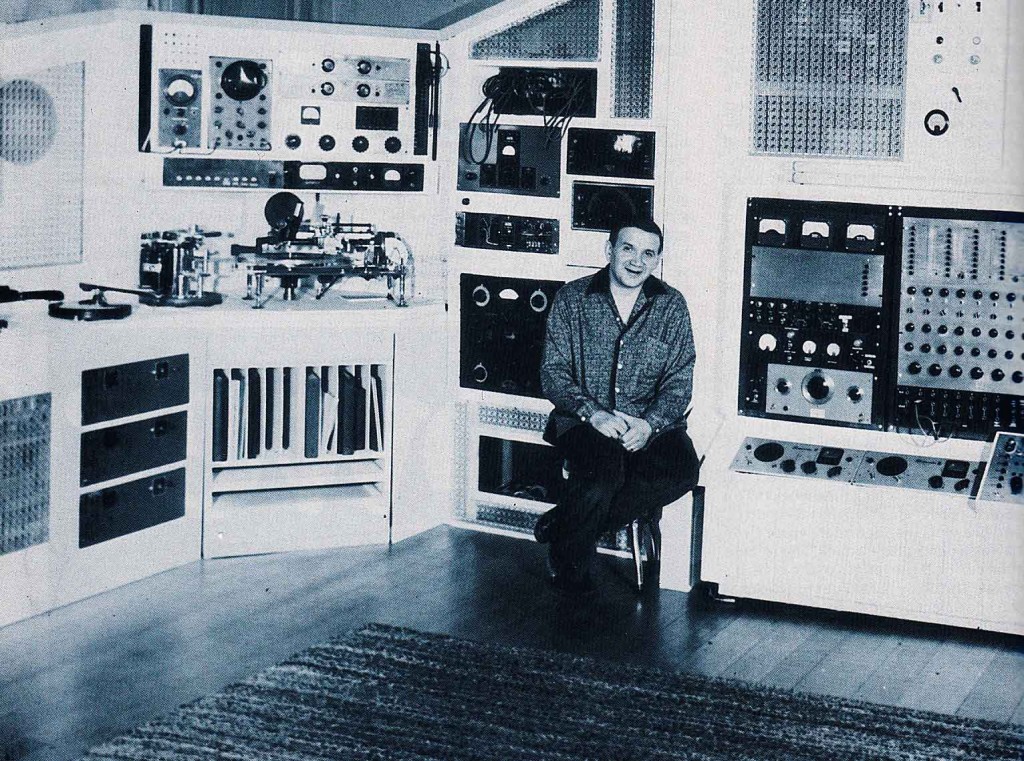 Raymond Scott in his home studio, 1955
Raymond Scott in his home studio, 1955
“The composer must bear in mind that the radio listener does not hear music directly. He hears it only after the sound has passed through a microphone, amplifiers, transmission lines, radio transmitter, receiving set, and, finally, the loud speaker apparatus itself.” —Raymond Scott, 1938
“Raymond Scott was definitely in the forefront of developing electronic music technology, and in the forefront of using it commercially as a musician.” – Bob Moog (SOURCE)
Raymond Scott was one of the true visionaries of early electronic music. You can read his fascinating story here. Being a huge fan of Eno, Tangerine Dream, and Klaus Schulze, it is remarkable to me that Scott was creating very similar compositions (often with his own homemade equipment) a decade or more before any of those artists. Many early electronic artists seemed interested in sound-as-music, noise-as-music – recall how Varese, Stockhausen, and Luening used electronics in their work. Others seemed content to replicate traditional harmonic and melodic patterns, using the newly available electronic voices as novel colors. For instance, Wendy Carlos (no link available due to the fact that Carlos seems stuck in the past as regards YouTube and modern content realities. Ironic, ain’t it). NEways,,, Scott, contrary to both of these approaches, walked a middle line – creating often wholly electronic music in which the harmonic, rhythmic, and melodic strategies were both pleasantly listenable but also very true to their synthetic nature: there’s really no attempt to shoehorn trumpet and piano lines into the new voices he established. To rephrase: the material is very much composed for these particular new voices, but in an approachable way.
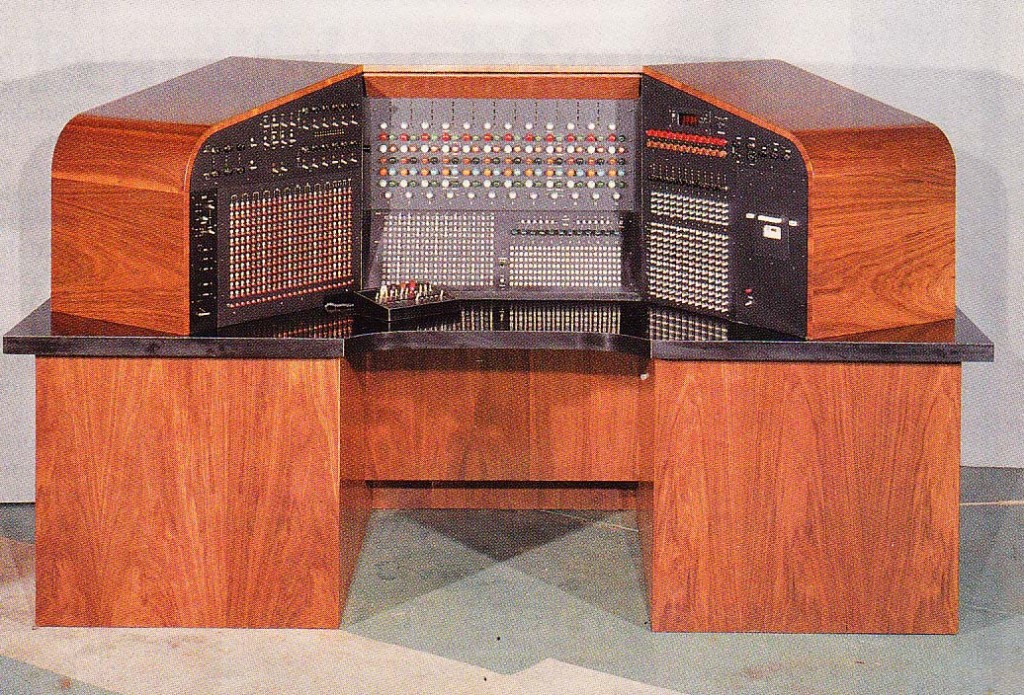 Above, Scott’s ‘Electronium’ music computer of 1965. Not too surprisingly, it is currently owned by Mark Mothersbaugh; a child to Scott’s marriage of esoteric electronics and pop sensibility if there was ever one. The ‘Electronium’ currently awaits restoration. Makes me cringe to just think about servicing that thing. Good luck fellas.
Above, Scott’s ‘Electronium’ music computer of 1965. Not too surprisingly, it is currently owned by Mark Mothersbaugh; a child to Scott’s marriage of esoteric electronics and pop sensibility if there was ever one. The ‘Electronium’ currently awaits restoration. Makes me cringe to just think about servicing that thing. Good luck fellas.
For more coverage of early electronic music pioneers on PS dot com, click here.
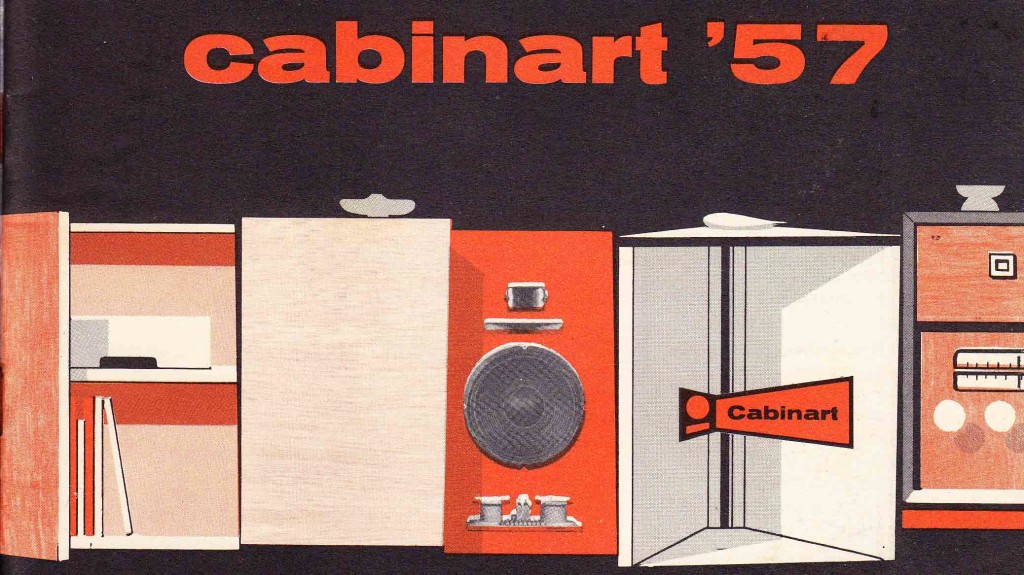 Download the complete 36pp 1957 Cabinart catalog (presented in three parts due to size)
Download the complete 36pp 1957 Cabinart catalog (presented in three parts due to size)
DOWNLOAD PART 1: Cabinart_1957_part1
DOWNLOAD PART 2: Cabinart_1957_part2
DOWNLOAD PART 3: Cabinart_1957_part3
Models covered include: well, hundreds of ’em. All intended for Mono operation, including the ‘Rebel’ series of corner-horns designed by Paul Klipsch.
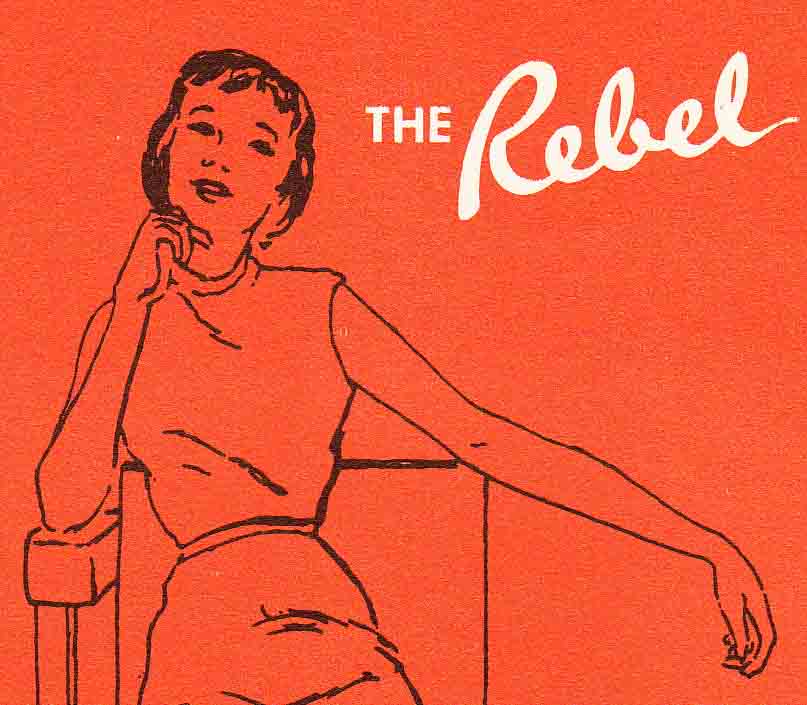
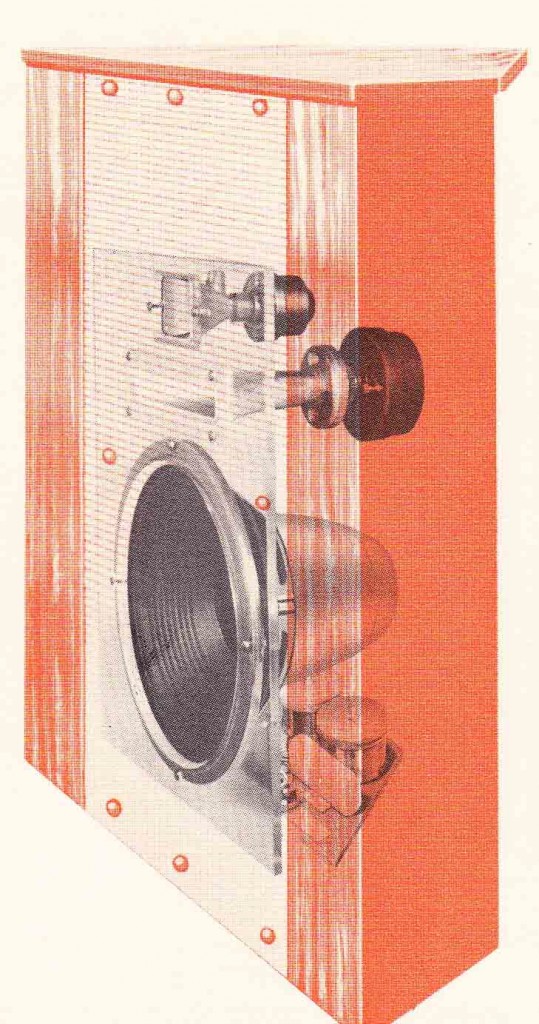 Above, the Rebel ‘Ortho 315’ which featured University (aka Altec) and Klipsch components.
Above, the Rebel ‘Ortho 315’ which featured University (aka Altec) and Klipsch components.
When I think of ‘Hi Fi Furniture’ I immediately envision the wares of the Bell’ogetti brand (now known simply as ‘Bell’o’). Their classic 80s and 90s designs were largely minimal, metal, and exposing the equipment in a dramatic manner. Hi-Fi furniture of the 50’s was designed rather to hide and/or disguise the equipment: to ‘blend’ with the more traditional home-furnishings such as the hutch and end-table.
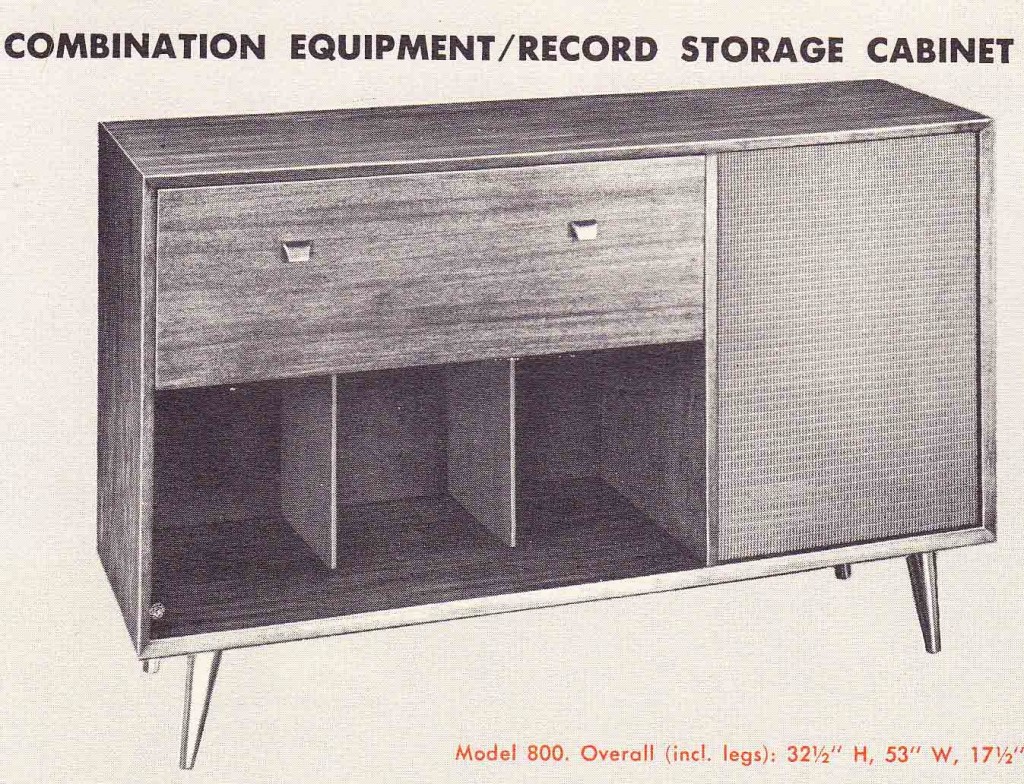
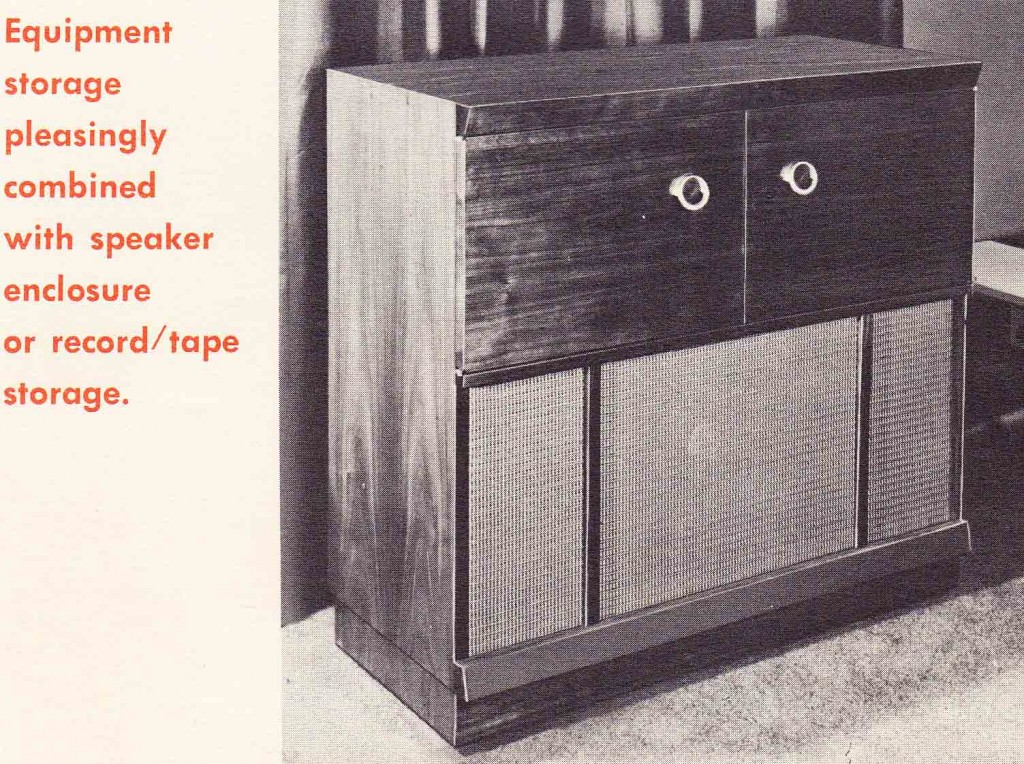
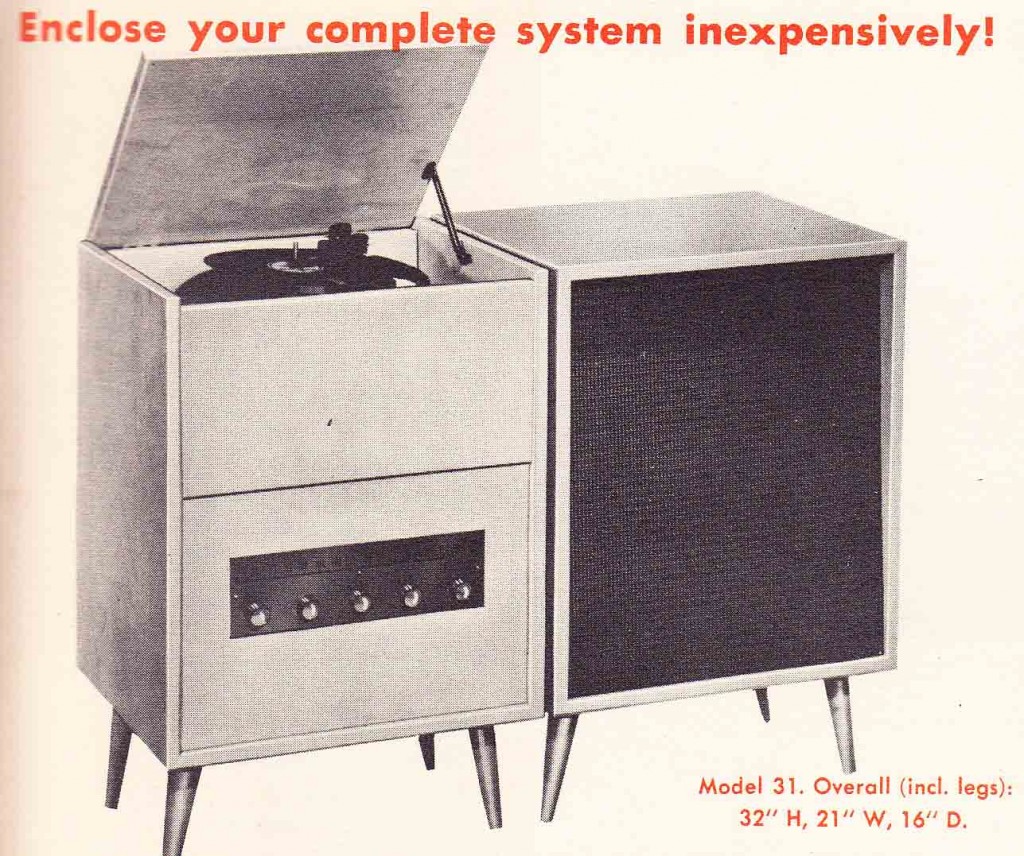 An interesting side-note: it seems like a mono-system offers more opportunities for designing attractive, unobtrusive hi-fi furniture. Once you can commit to a single set of speakers, why not simply put the components in the same spot? The whole system can be aesthetically unified, there are no wires running all over the place, etc. Stereo console-furniture was certainly made as well in the coming years, but at some point we seem to have entered an era of conspicuous display of audio equipment rather than following a policy of tasteful containment.
An interesting side-note: it seems like a mono-system offers more opportunities for designing attractive, unobtrusive hi-fi furniture. Once you can commit to a single set of speakers, why not simply put the components in the same spot? The whole system can be aesthetically unified, there are no wires running all over the place, etc. Stereo console-furniture was certainly made as well in the coming years, but at some point we seem to have entered an era of conspicuous display of audio equipment rather than following a policy of tasteful containment.
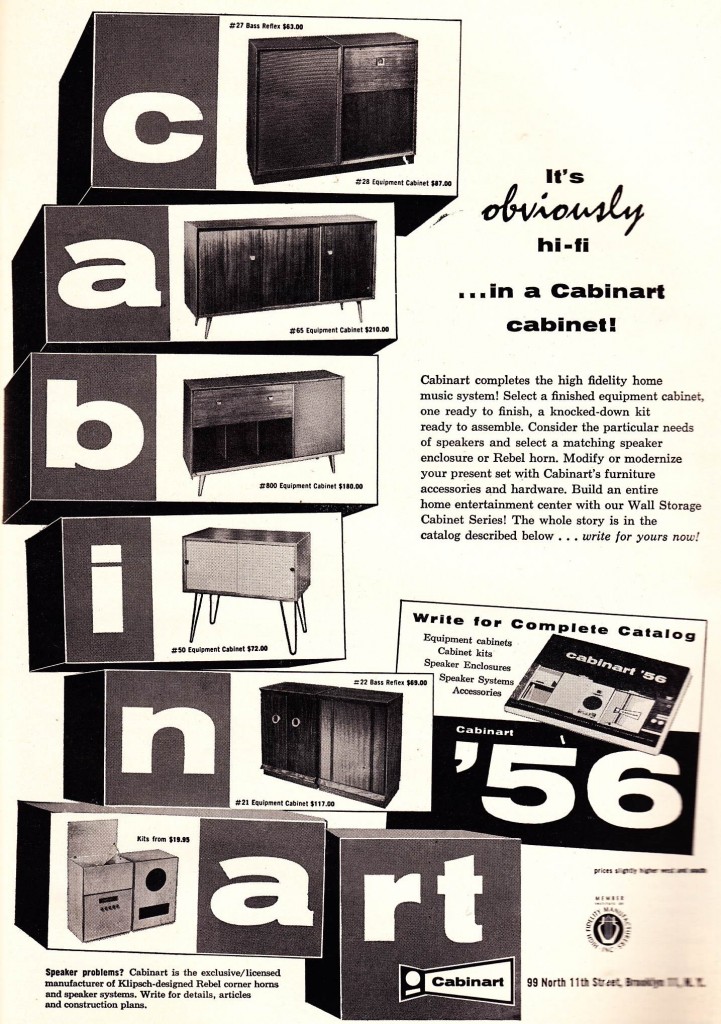 Above, a Cabinart print-ad from 1956. As the advert points out, most Cabinart models were available in three variants: assembled+ finished, ready-to-finish, or as ready-to-assemble-and-finish.
Above, a Cabinart print-ad from 1956. As the advert points out, most Cabinart models were available in three variants: assembled+ finished, ready-to-finish, or as ready-to-assemble-and-finish.
 Above, 99 North 11th street, Brooklyn, NY, former home of Cabinart, as it stands today. Lofts are available, btw. This structure is a stones-throw away from Beacon’s Closet and the Brooklyn Brewery, two icons of the ‘New-Williamsburg’ if ever there were.
Above, 99 North 11th street, Brooklyn, NY, former home of Cabinart, as it stands today. Lofts are available, btw. This structure is a stones-throw away from Beacon’s Closet and the Brooklyn Brewery, two icons of the ‘New-Williamsburg’ if ever there were.
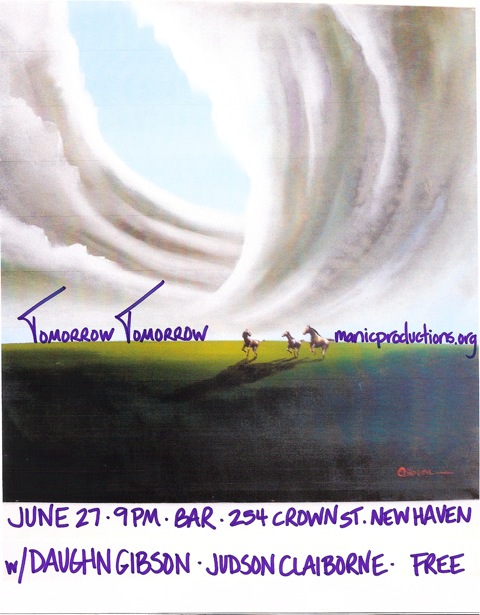 This Wednesday at BAR in New Haven CT I will be performing as part of Tomorrow Tomorrow, a new group organized around Meredith Dimenna. Tomorrow Tomorrow is the first full-length album that I’ve produced in my new spot Gold Coast Recorders and it is very exciting to be bringing it to life for the first time. Meredith is a truly gifted vocalist and the music is unique hybrid of raw country and psychedelic drone. TT is opening for Daughn Gibson, a fine singer who was been getting acclaim for his new record on the White Denim label. If you’re in the area, come on down; the show is free and Bar serves some of the best pizza in world too.
This Wednesday at BAR in New Haven CT I will be performing as part of Tomorrow Tomorrow, a new group organized around Meredith Dimenna. Tomorrow Tomorrow is the first full-length album that I’ve produced in my new spot Gold Coast Recorders and it is very exciting to be bringing it to life for the first time. Meredith is a truly gifted vocalist and the music is unique hybrid of raw country and psychedelic drone. TT is opening for Daughn Gibson, a fine singer who was been getting acclaim for his new record on the White Denim label. If you’re in the area, come on down; the show is free and Bar serves some of the best pizza in world too.
Diggin
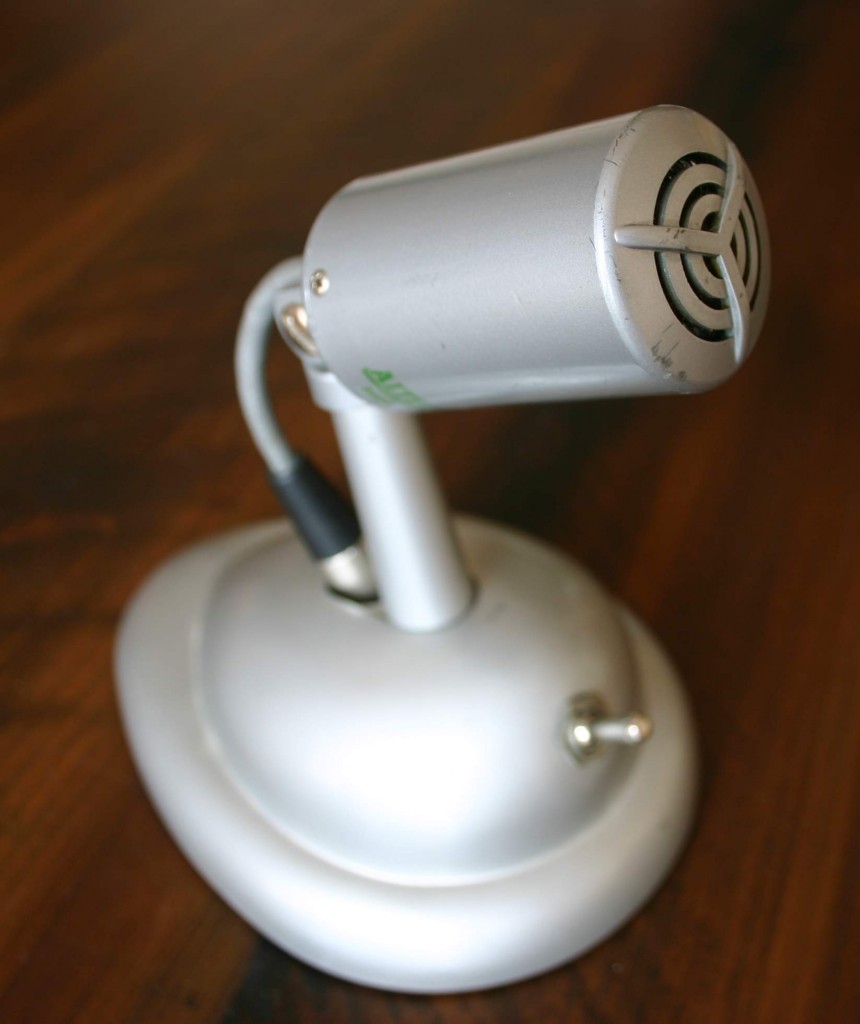 Picked up a few interesting pieces today. Above, an Altec 660B microphone circa 1958. I already had a 660A (same thing, but fixed impedance) but this was too good a deal to pass up. Altec marketed these as ‘broadcast mics’ but both of my units, while having pretty good top end, have a pretty weak bass response. The 660B sounds a little bit better to my ears.
Picked up a few interesting pieces today. Above, an Altec 660B microphone circa 1958. I already had a 660A (same thing, but fixed impedance) but this was too good a deal to pass up. Altec marketed these as ‘broadcast mics’ but both of my units, while having pretty good top end, have a pretty weak bass response. The 660B sounds a little bit better to my ears.
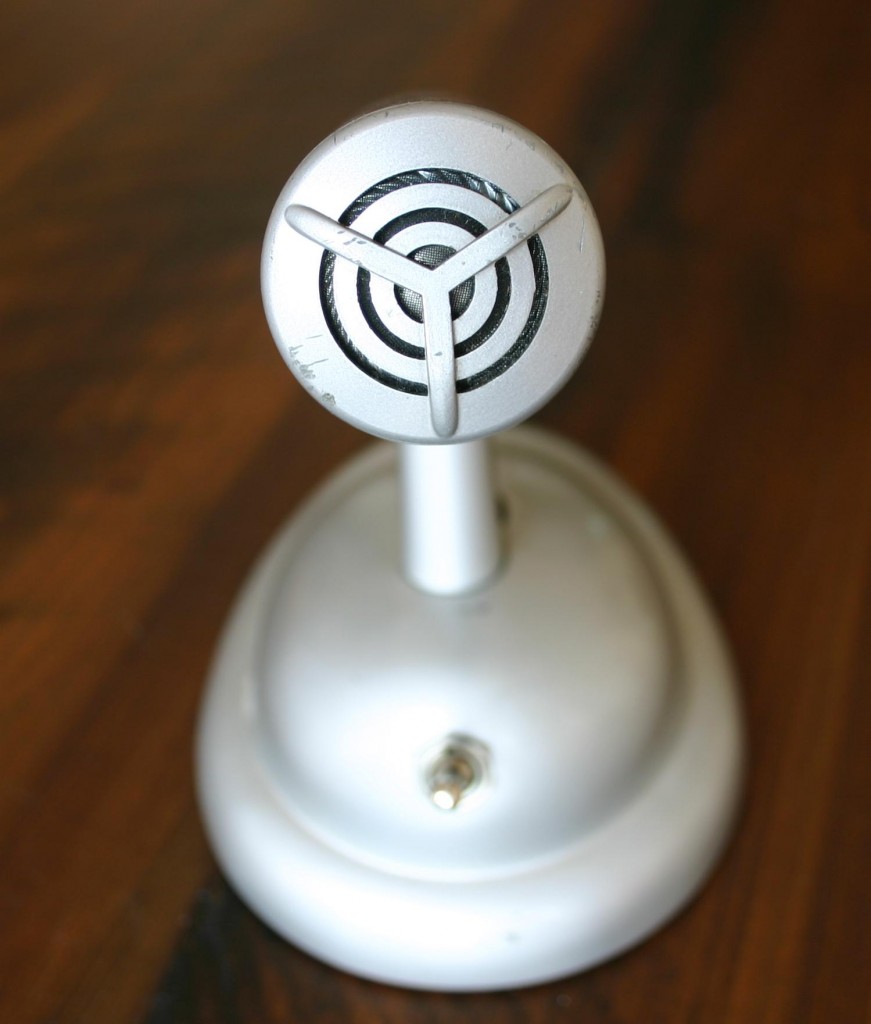
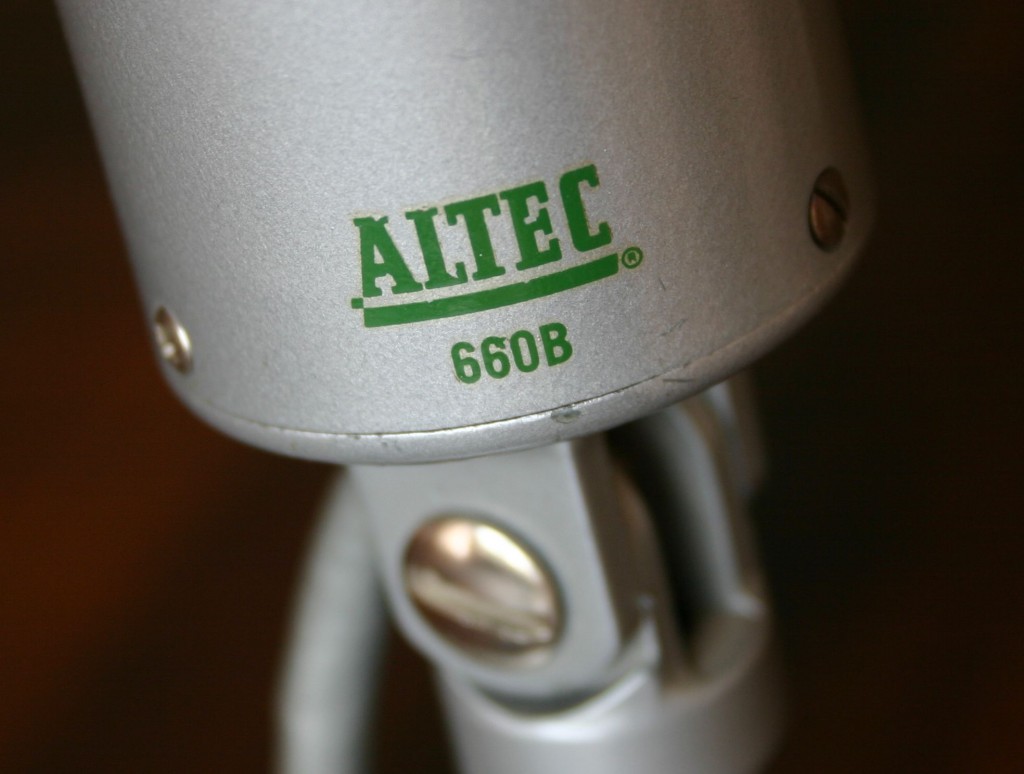
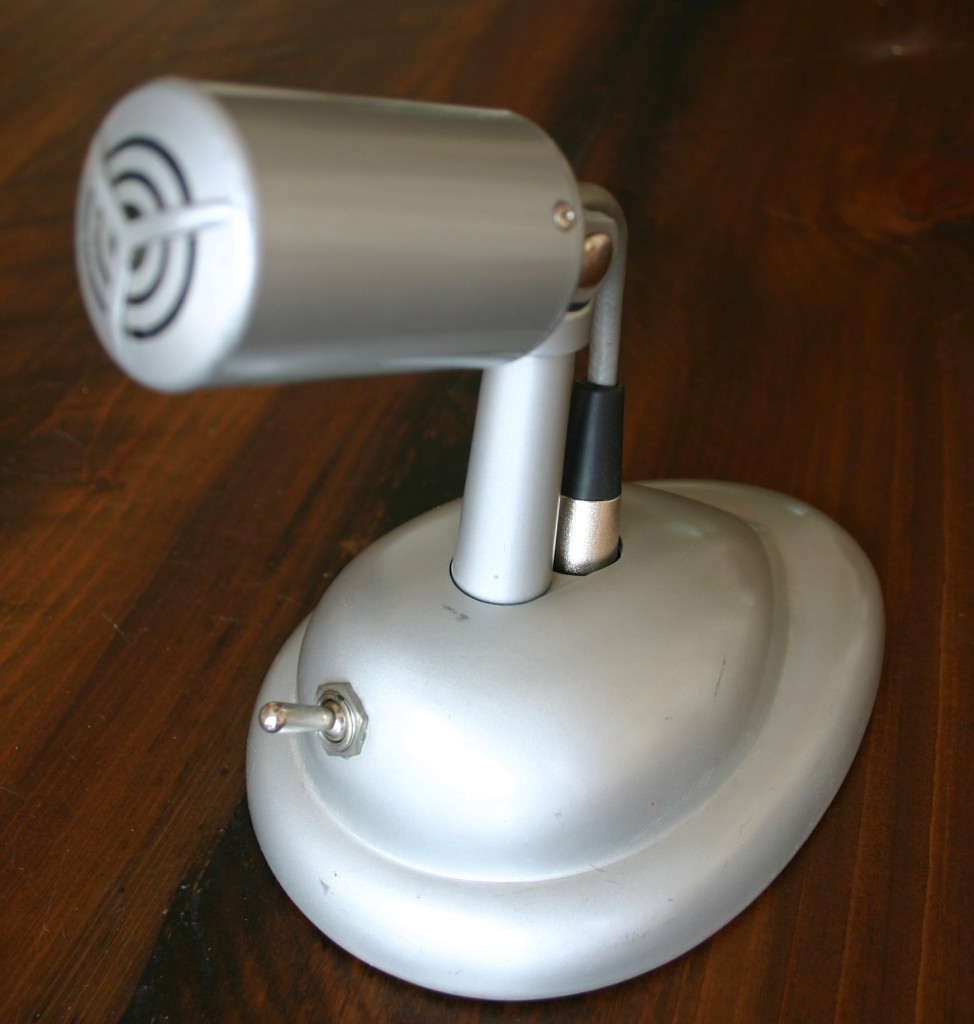 The 660B came mounted on this beautiful Shure S36 tabletop mic stand; that’s a push-to-talk DPDT switch mounted on the front.
The 660B came mounted on this beautiful Shure S36 tabletop mic stand; that’s a push-to-talk DPDT switch mounted on the front.
*******
***
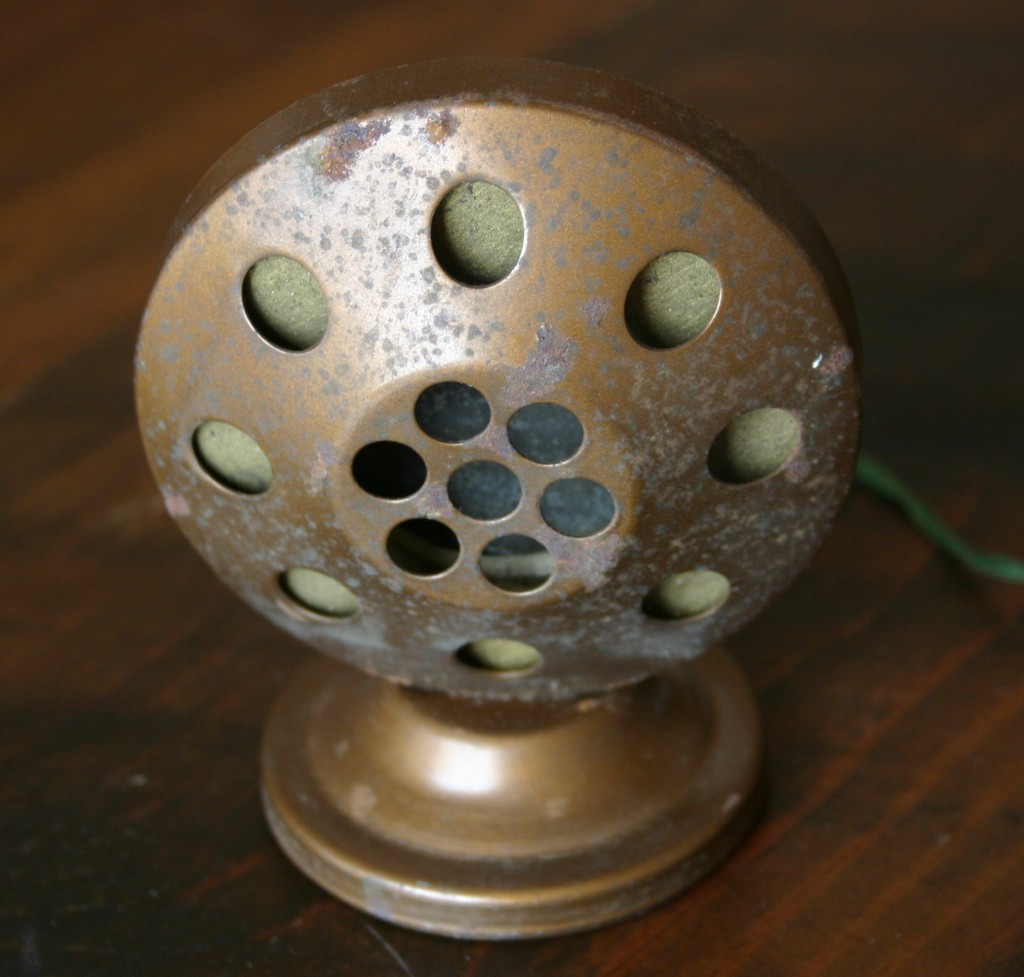 Moving on to stranger fare: above, a “Little Mike” as made by the Brooklyn Metal Stamping Company circa 1930. This one confused me for a minute as it had no markings on it other than a patent date on the rear:
Moving on to stranger fare: above, a “Little Mike” as made by the Brooklyn Metal Stamping Company circa 1930. This one confused me for a minute as it had no markings on it other than a patent date on the rear:
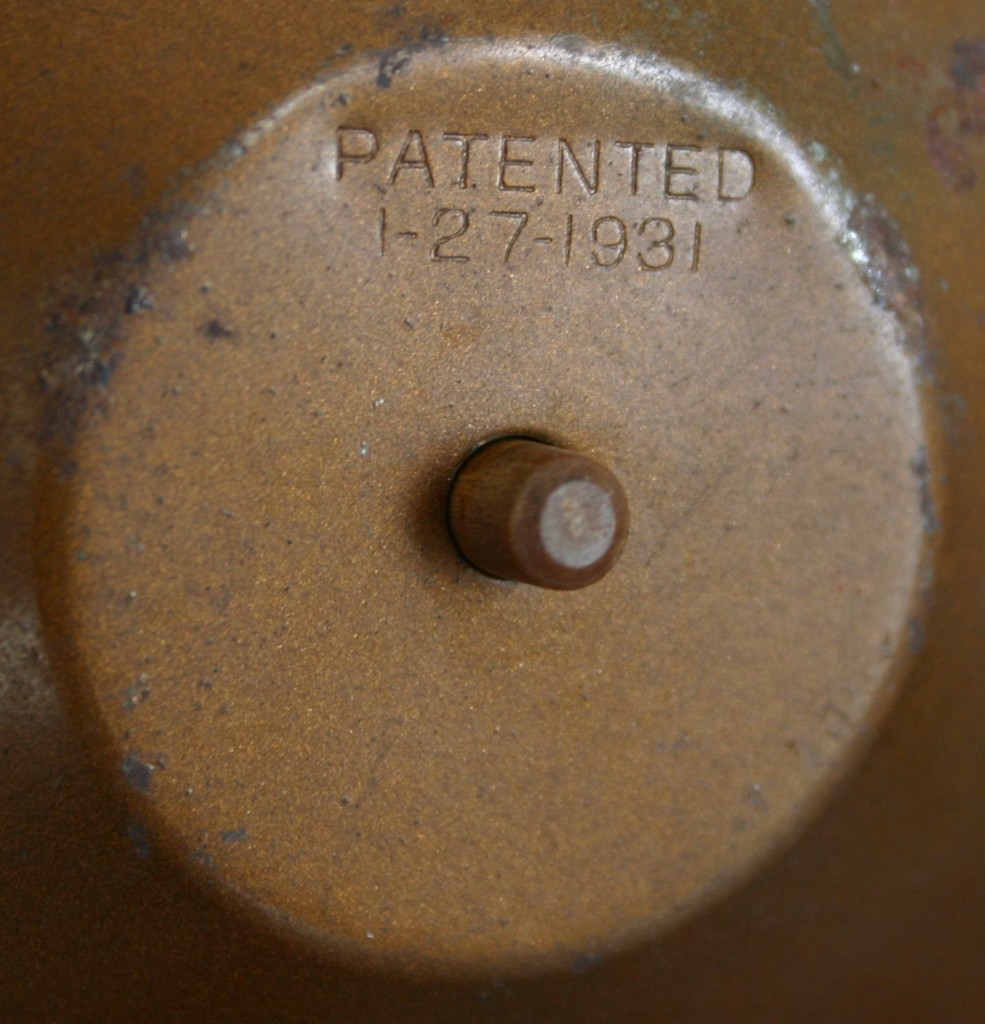 This was enough information to coax Google into revealing the origins of this artifact. See here and here for the details.
This was enough information to coax Google into revealing the origins of this artifact. See here and here for the details.
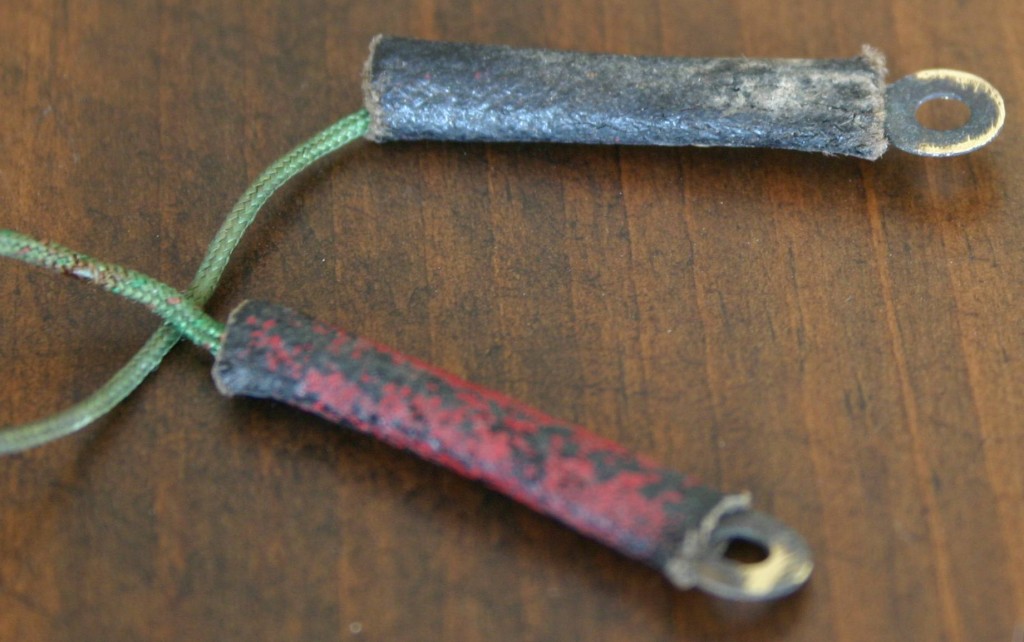 The Little Mike’s rather long stretch of two-conductor cable terminates in these unusual copper discs. As it turns out, these discs are intended to be attached thru two of the pins on a radio’s detector tube; this will allow the mic signal to come out of the radio speaker.
The Little Mike’s rather long stretch of two-conductor cable terminates in these unusual copper discs. As it turns out, these discs are intended to be attached thru two of the pins on a radio’s detector tube; this will allow the mic signal to come out of the radio speaker.
The question is, naturally: which pins? The grid and the ground-side filament, I assume? I can’t figure out how to get sound out of this thing. I get no DC resistance reading across the two terminals, and no sound when I connect the terminals across a high-gain, high-impedance input. I am guessing, based on the patent date, that this is a single-button carbon mic, which would mean that I would need a low voltage source and a signal transformer that can handle DC on the primary in order to test it. Anyone have any suggestions/advice?
***update: read the comments section for implementation information courtesy of M. Shultz, as well as the not-so-thrilling conclusion to the saga of Little Mike.
1971
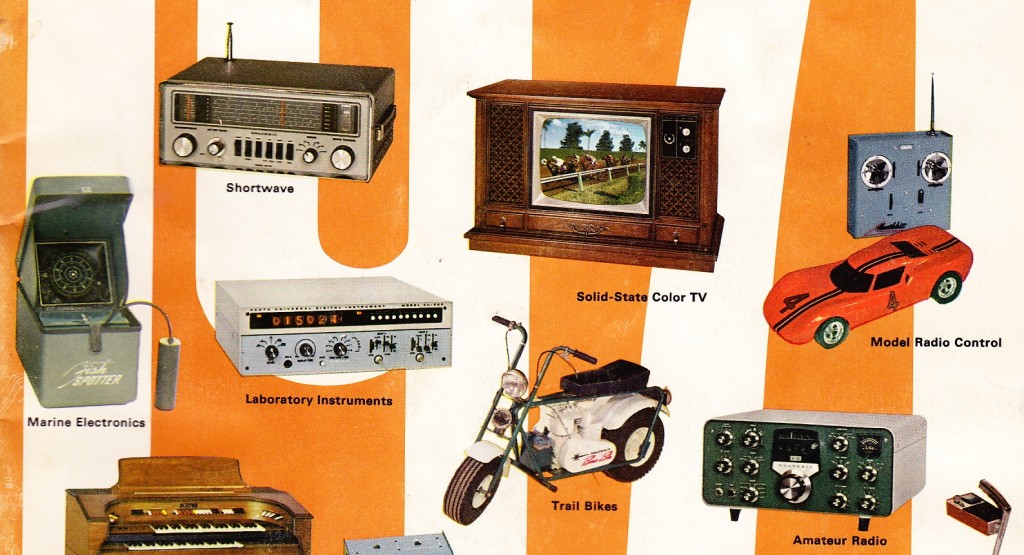 Art dep’t comp for a Wes Anderson film?
Art dep’t comp for a Wes Anderson film?
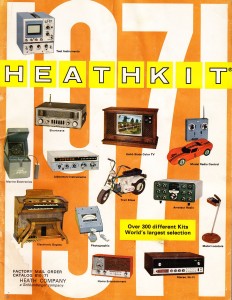 Nope, it’s the cover of the 1971 Heathkit catalog.
Nope, it’s the cover of the 1971 Heathkit catalog.
Stumbled upon this, and the accompanying 1971 Heathkit ‘Holiday Catalog’ at a sale today. Nothing too notable on display, but the photography is pretty fantastic. Just watched the latest Wes Anderson pic – his first period picture, I believe – and it struck me that it didn’t feel any different than his other films as far as the wardrobe, propping, and sets. His contemporary characters all seem to hide in the past, at least as far as their chattels are concerned. So heavy is the burden of material culture upon Mr. Anderson. And upon this writer, apparently. Dig in…
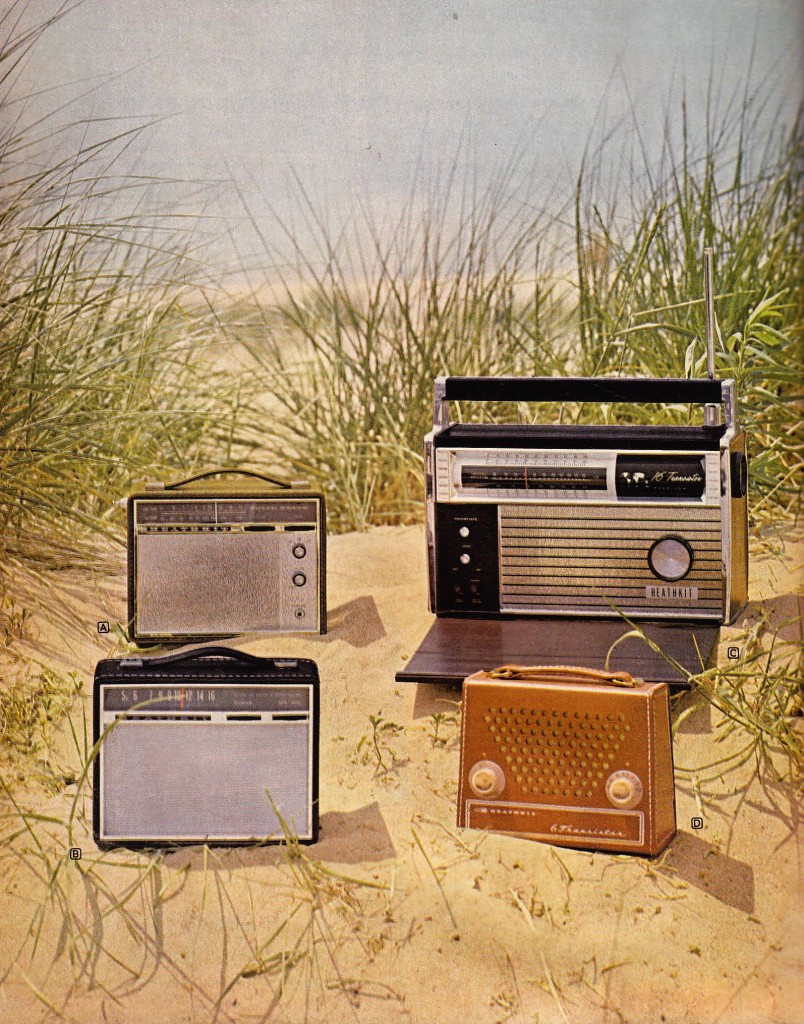 Do you remember the beach-times?
Do you remember the beach-times?
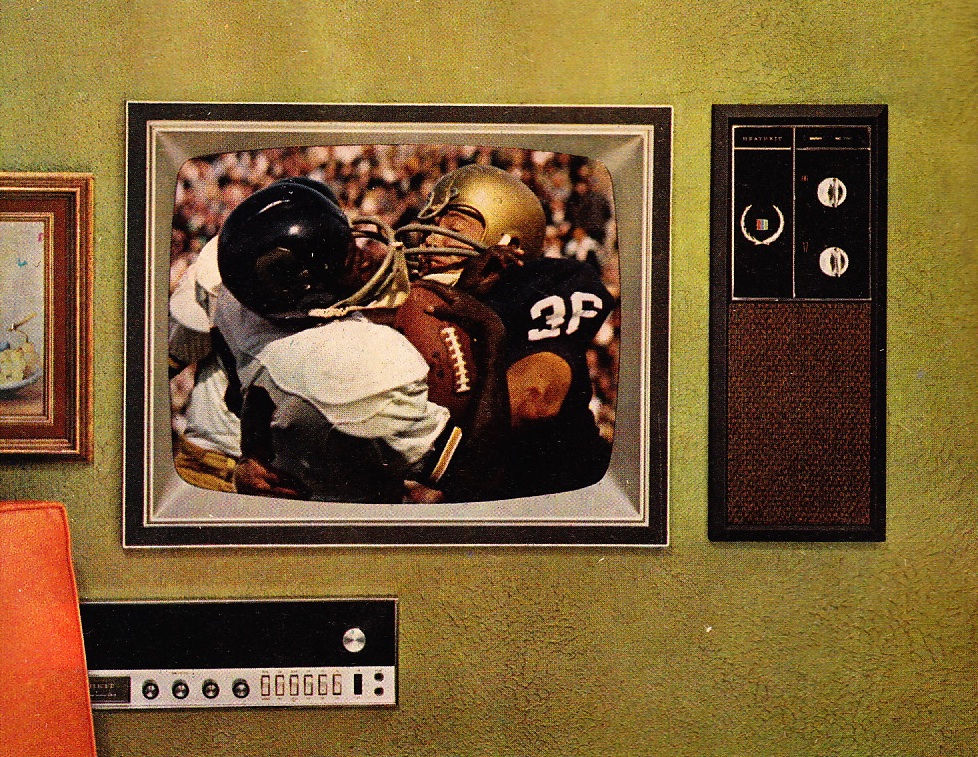 Fukk yr flat-screens. I’m talkin bout in-wall CRTs.
Fukk yr flat-screens. I’m talkin bout in-wall CRTs.
The elusive Tequila Sunrise, miraculously captured indoors
Pictured above: the Heathkit TA-38 bass amplifier and the Heathkit TA-29 and JK-37 guitar amplifiers. Also, your parents.
*************
*******
***
For earlier Heathkit coverage on Preservation Sound dot com, click here.
Audio Ephemera Alert
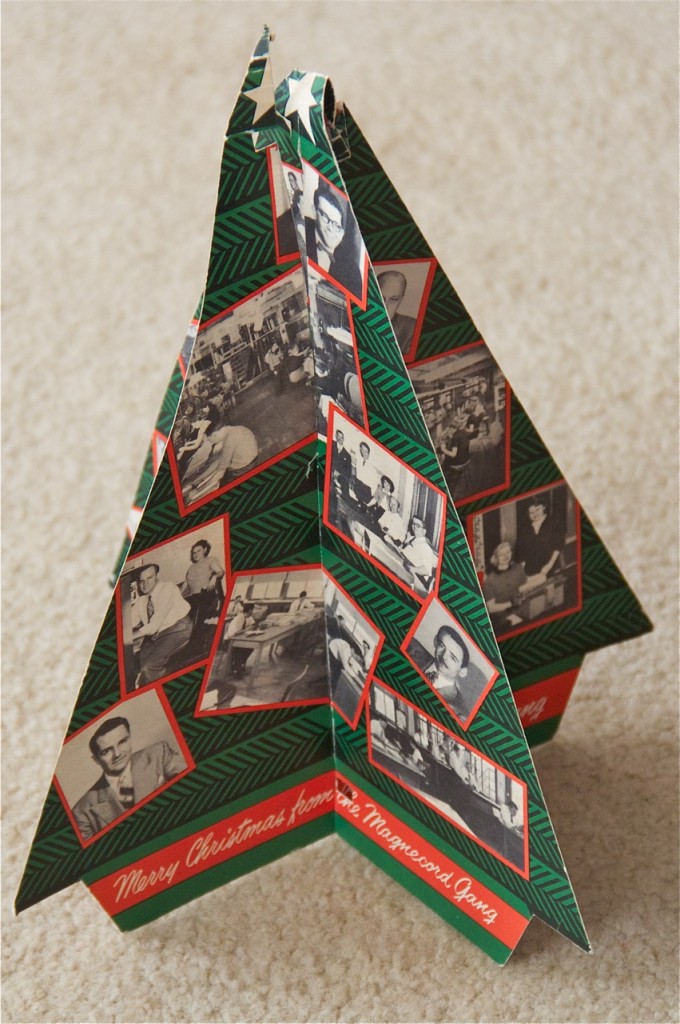 From the Boyers family archive: a charming mid-50’s 8-sided Christmas Card celebrating the holiday season and the ‘Magnecord Gang.’ The identities of many of these folks are lost to time; if you recognize anyone, drop us a line and let the Boyers know who’s depicted here.
From the Boyers family archive: a charming mid-50’s 8-sided Christmas Card celebrating the holiday season and the ‘Magnecord Gang.’ The identities of many of these folks are lost to time; if you recognize anyone, drop us a line and let the Boyers know who’s depicted here.
For much much more Magnecord coverage + archival materials on PS dot com, click here. To view the other six sides of the Magnecord card, click the link below.
READ ON…
